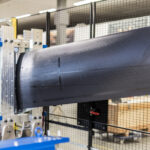For aviation enthusiasts, possibly the most inspiring adventure of the 2010s was the SolarImpulse 2 round-the-world flight – 40,000km in 17 stages on solar power only. Not a drop of fuel consumed, and records set along the way including the first overnight solar flight and the longest-ever solo flight – over 7,200km in nearly 118hrs, with project co-founder André Borschberg at the controls.
While the endurance – of aircraft and pilots – was impressive, the rationale for creating and testing what Borschberg and co-adventurer Bertrand Piccard described as a laboratory full of clean technologies was to “promote the use of renewable energies and energy efficiency on the ground, for a better quality of life”.
Now, Piccard is going one step further by creating ClimateImpulse, a green, hydrogen-powered aeroplane designed to fly non-stop around the Earth, demonstrating how concrete solutions can help build a cleaner and more efficient world.
For many aviation people, hydrogen is a fuel with huge potential to decarbonise flight. But hydrogen fuel is only part of the equation that may make ClimateImpulse a reality. Ultimately, to achieve a non-stop circumnavigation will require a very special aircraft: light, strong and resilient. Materials are a critical part of the package, and Piccard has teamed up with science company Syensqo as the main partner for ClimateImpulse, to be built in France by engineer and navigator Raphaël Dinelli with a view to flying in 2028.
FINN asked Syensqo global customer engineering director Rob Blackburn for some thoughts on the ClimateImpulse challenge, its hoped-for impact and how this project will compare to SolarImpulse from an engineering perspective:
FINN: With the Climate Impulse project, what will be the key materials advances compared to SolarImpulse?
Blackburn: Rather than ‘harvesting’ the energy of the sun in multiple legs of a global trip with Solar Impulse, Climate Impulse will need to depart ‘home’ with everything it needs ‘on-board’ for an entire circumnavigation – supporting both the power generation and the crew in this adventure. As such, there are considerable loads and structural demands placed on the aircraft – which will be constructed with class-leading aerospace carbon-fibre composites from Syensqo’s portfolio – to accelerate the design and validation process! High levels of toughness and stiffness are demanded in this cutting-edge structure – all of which relies on Syensqo’s decades of experience and material characterisation knowledge to create robust designs and the airframes built to those designs.
In addition to our high-performance materials for the Proton Exchange Membrane and binder for electrodes of the fuel cell will be key enablers for exceptionally high-power density and efficiency to the stack, allowing more compact design.
FINN: Cryogenic hydrogen fuel tanks are of course new to ClimateImpulse – what is the performance improvement compared to current “state of the art” hydrogen containment systems?
Blackburn: The current state of the art solutions focus on metallic constructions – which can deliver fine performance, indeed. However, the challenge of carrying enough fuel for an entire, non-stop circumnavigation motivates the team to seek the lightest possible solutions for containing the fuel needed – which will bring benefits to the entire aircraft ‘system’. Lighter tanks can result in lighter structures that will then require smaller, lighter engines – and so the circle continues virtuously.
FINN: Construction of ClimateImpulse has now begun – so are the various materials and construction techniques already validated, or is R&D ongoing?
Blackburn: The materials selected for the project do, indeed, have proven heritage in demanding applications over recent years – backed up by Syensqo’s databases of material characterisation and processing expertise. The project does, however, give the opportunity to explore some new formats and variations on trusted technologies that will give our R&D teams a chance to validate and prove our contemporary thinking, too – there’s plenty of excitement to come.
FINN: And, the ClimateImpulse flight is planned for 2028 (after construction and testing) – when will other aviation clients have access to any of this technology?
Blackburn: The ultimate Climate Impulse adventure is, indeed, planned for 2028. There will be considerable development and validation cycles before that time at all levels of the design – and Syensqo and the Climate Impulse team is really looking forward to learning together, sharing the outcomes and seeking new applications as soon as we can!
Subscribe to the FINN weekly newsletter

